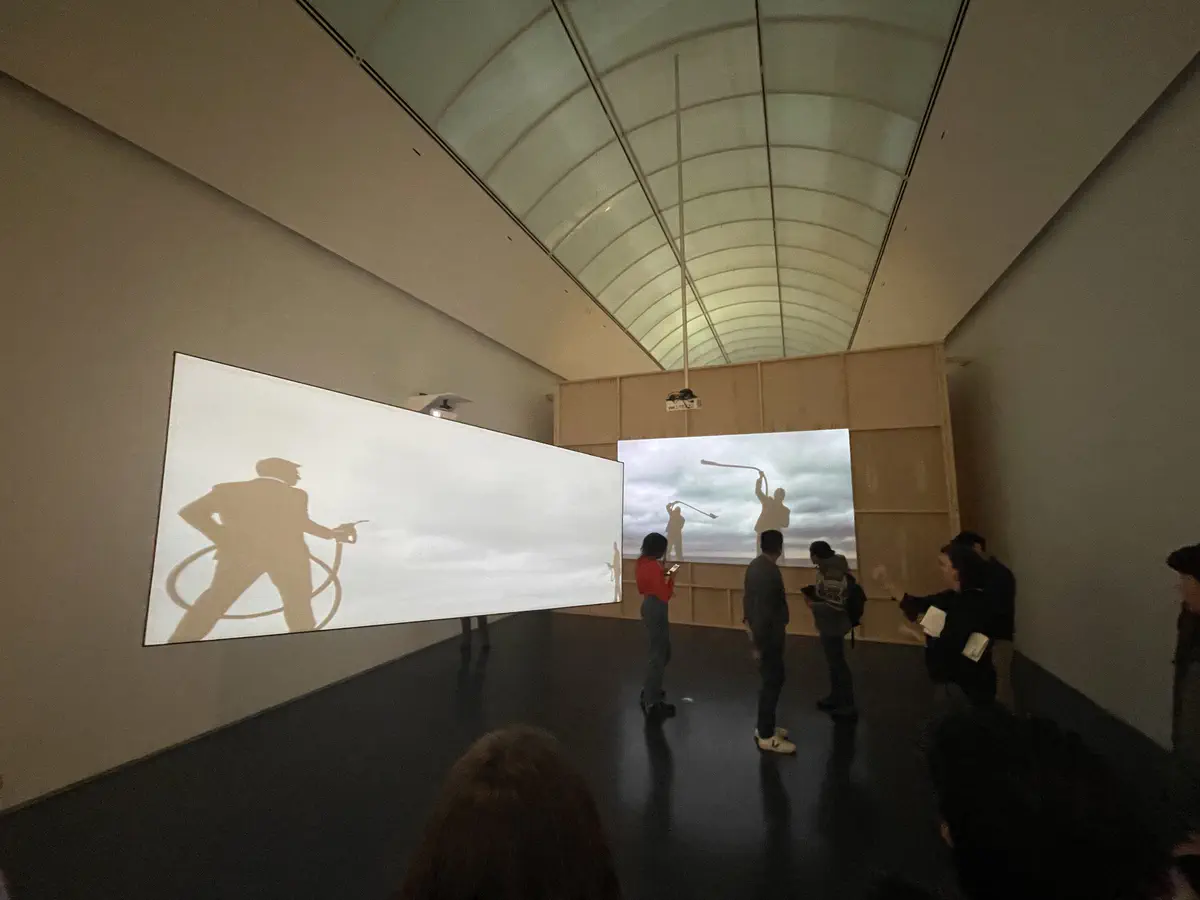Christopher Cozier's Gas Men
Thoughts on transnationalism and the environment ⛽️.
 Image credit: Ethan Jiang
Image credit: Ethan JiangIn February, I visited the Museum of Contemporary Art in Chicago to view the exhibition Forecast Form: Art in the Caribbean Diaspora, 1990s–Today. Although I enjoyed all of the work at the museum, Gas Men stuck out to me as a particularly biting indictment of imperialism in the Caribbean. The film transforms the executives of a petroleum company into shadowy vestiges of Wild West cowboys, who swing fuel hoses as lassos and wield gas nozzles as pistols. Cozier uses the analogy of cowboys, who are “Western” in more than one sense, to argue that resource extraction from Latin America and the Caribbean is part of a broader story of capitalist domination and colonialism. In particular, the guns reflect the United States’s military interventions in the region—the faceless businessmen could just as well be CIA agents.
Implicit in this critique is an environmental message: Cozier challenges the brazen destruction of ecosystems by multinational corporations. Just as cowboys disrupted the American West through cattle ranching, the oil industry wrecks marine habitats in pursuit of profit. Interestingly, the film was shot on the shores of Lake Michigan, which has suffered from pollution by local oil refineries in recent years. I interpret the decision to shoot in the United States, rather than the Caribbean, as a call to recognize the detrimental effects of internationalized capitalism for ecosystems in both the Global South and Global North. The benefits of this system accrue to a select few elites, while the working class the world over suffers. Furthermore, Cozier chooses to amplify the contrast in the scene, painting the gas men, clad in dark suits, in direct contrast to the natural beauty of Lake Michigan. The film’s audio drives this message home, with a wailing ambulance siren crying out for action before environmental catastrophe strikes.
Gas Men’s audio also recalls the cultural syncretism of the Caribbean. The haunting music that accompanies the video is primarily sitar, an instrument which signals the presence of South Asian culture in Cozier’s native Trinidad. I wonder, however, how this presence fits in with the broader theme of Cozier’s work. Is Cozier celebrating South Asian culture, or is he challenging the origins of Indo-Caribbeans through forced migration?